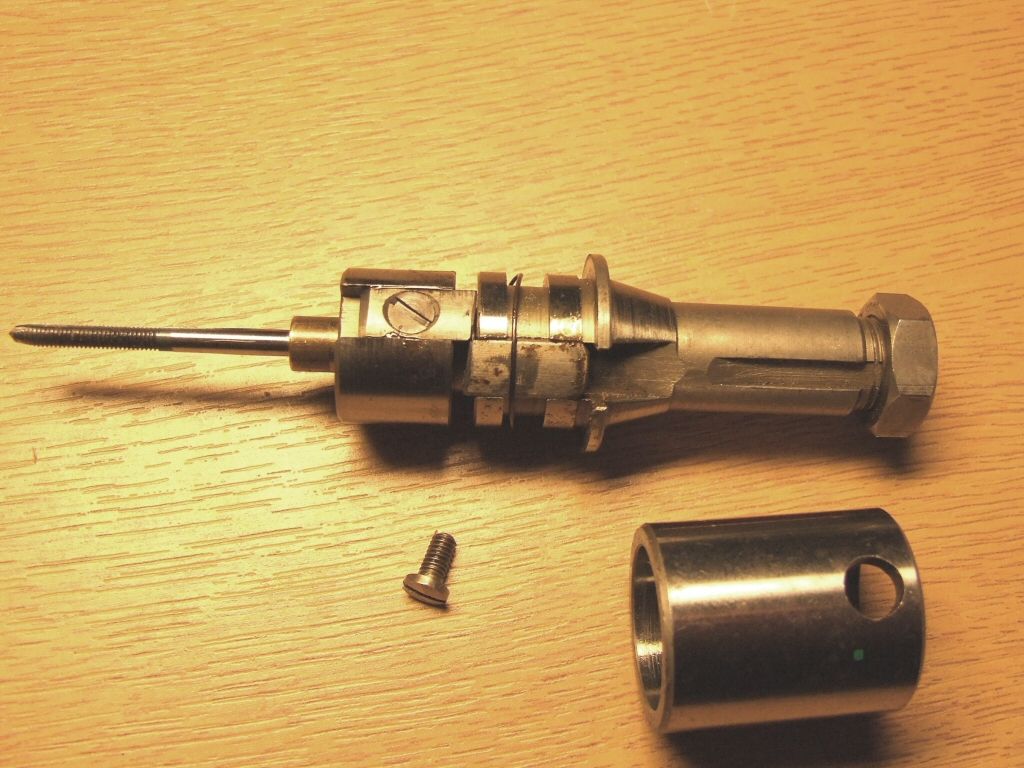JasonB: Thanks for the explanation, think I understand now. I'll have to wait and read the article in MEW when it arrives.
Oxymoron: Tapping heads come in a huge range of styles and functions for lathes and mills or drills. Here are mine for use on milling machines:

The one on the right is for CNC mills and is a tension/compression head. It is rigid in rotation but has some spring loaded compliance axially. So if your CNC mill doesn't do rigid tapping (mine doesn't) it allows you to tap and then reverse while compensating for slight differences in feed rate versus thread pitch, and for the slow down, spindle reversal and speed up without having to match the feedrate all the way. The other two are for use on a manual mill. They incorporate forward and reverse clutches and a variable torque limit. In use the tap is held in a rubber/metal collet. The depth of thread is set on mill quill stop allowing for a couple of millimetres overrun. Then with the mill running the tap is fed as per using a drill, although you need to roughly match the movement of the quill to the self feeding action of the tap. Once the stop is hit the tap drives another turn or so and then the forward clutch automatically disengages. A sharp upwards movement of the quill engages the reverse clutch and the tap is reversed out. The reversal of direction is internal (no need to reverse the mill spindle) and is usually at a faster speed than forward. For the unit on the left tapping is at the same speed at the spindle, the reverse out is at 1.75 times the spindle speed. Each tapping cycle only takes a second or two and no reactions times are needed.
There are also tapping units available for lathes, although I don't have any for the manual lathe. For the repetition lathe the tapping head is much simpler, basically just dog clutches, as shown here with the cover off:

This is a non-reversing unit, but the main spindle on the repetition lathe is reversed by flicking a switch on the headstock. It's more or less instantaneous as all it does is swap two phases on the motor, brutal but no need to stop the motor before reversing as it's designed for such operation.
I expect someone will now step in and 'complain' that this isn't milling for beginners. 
Andrew
Journeyman.








